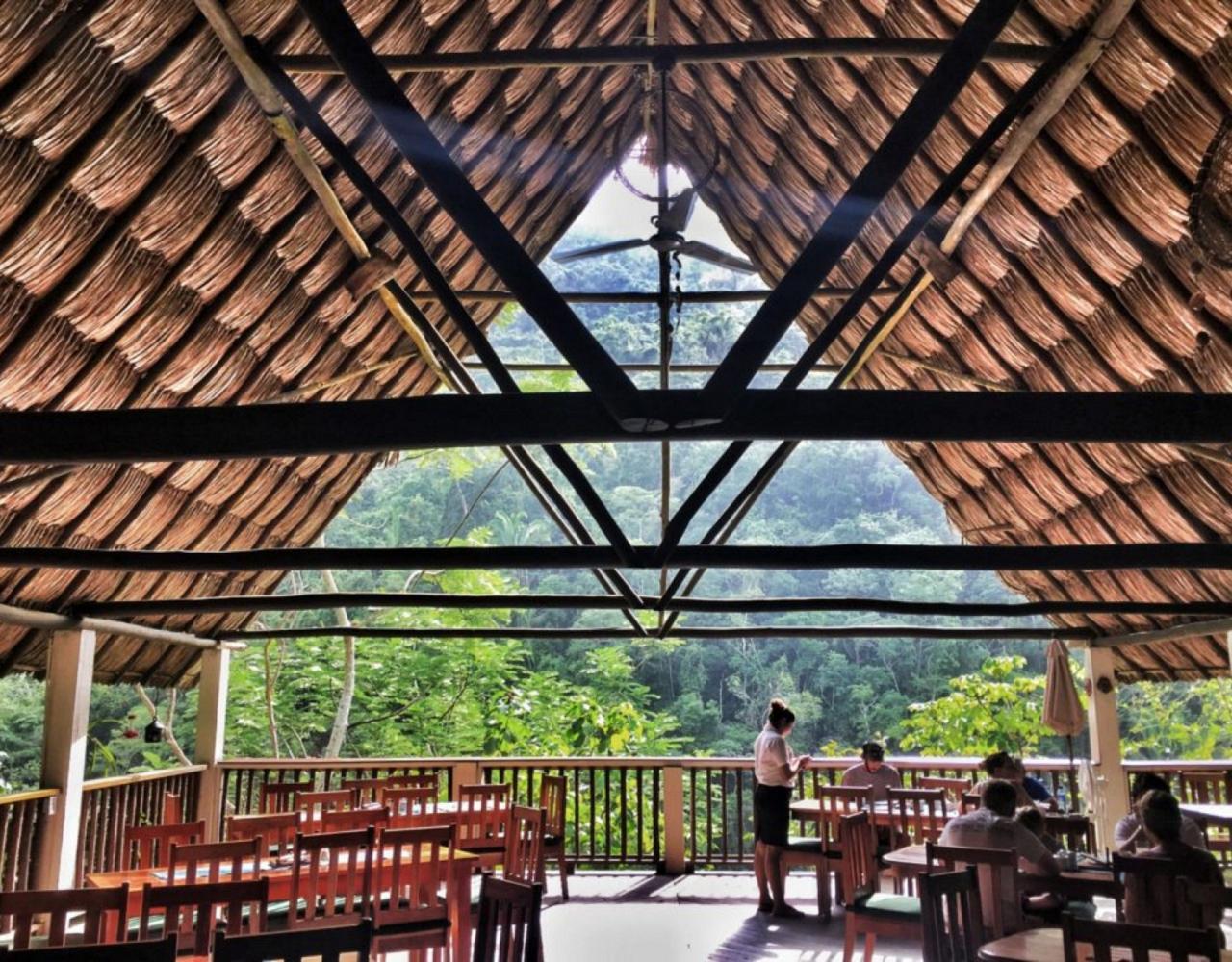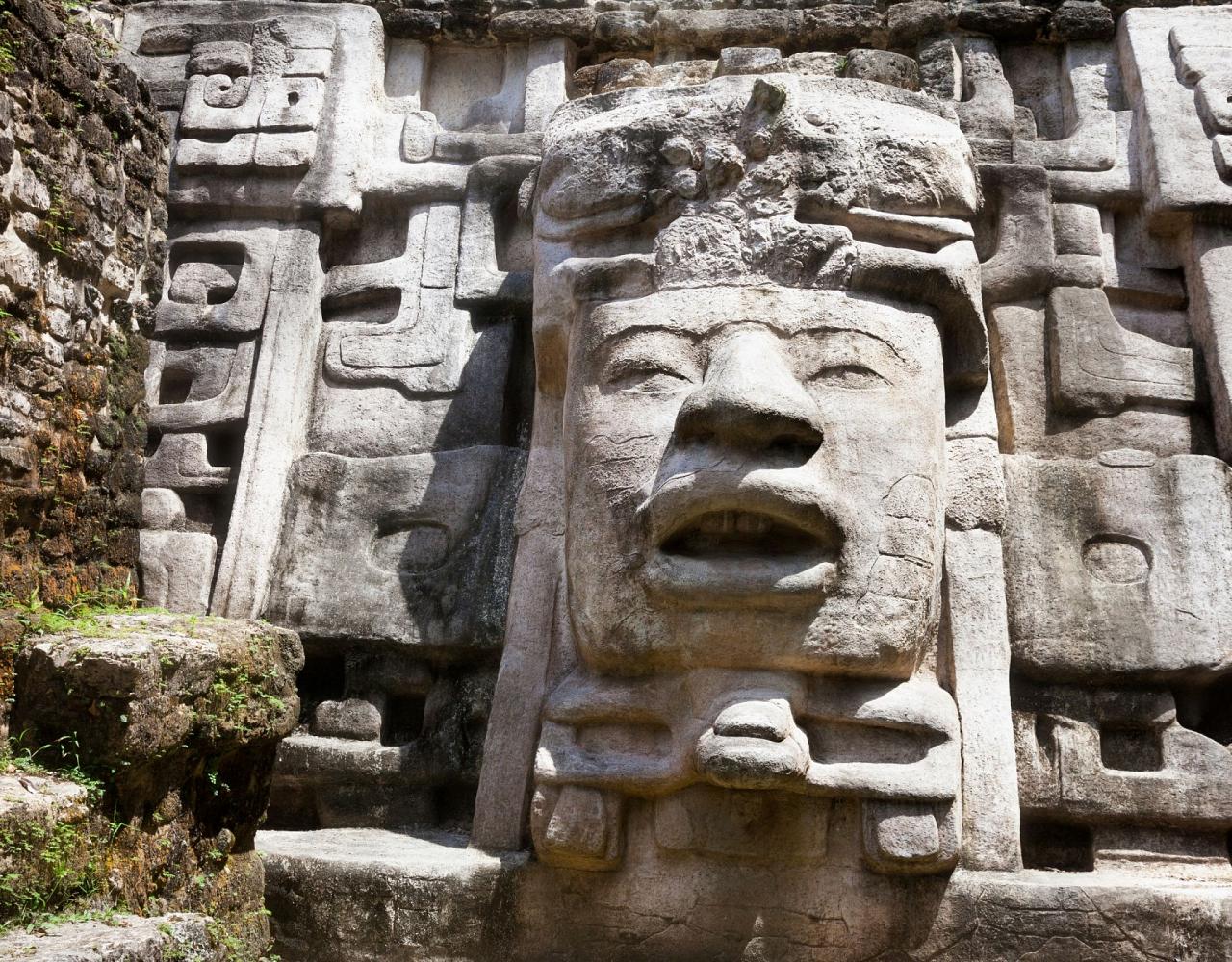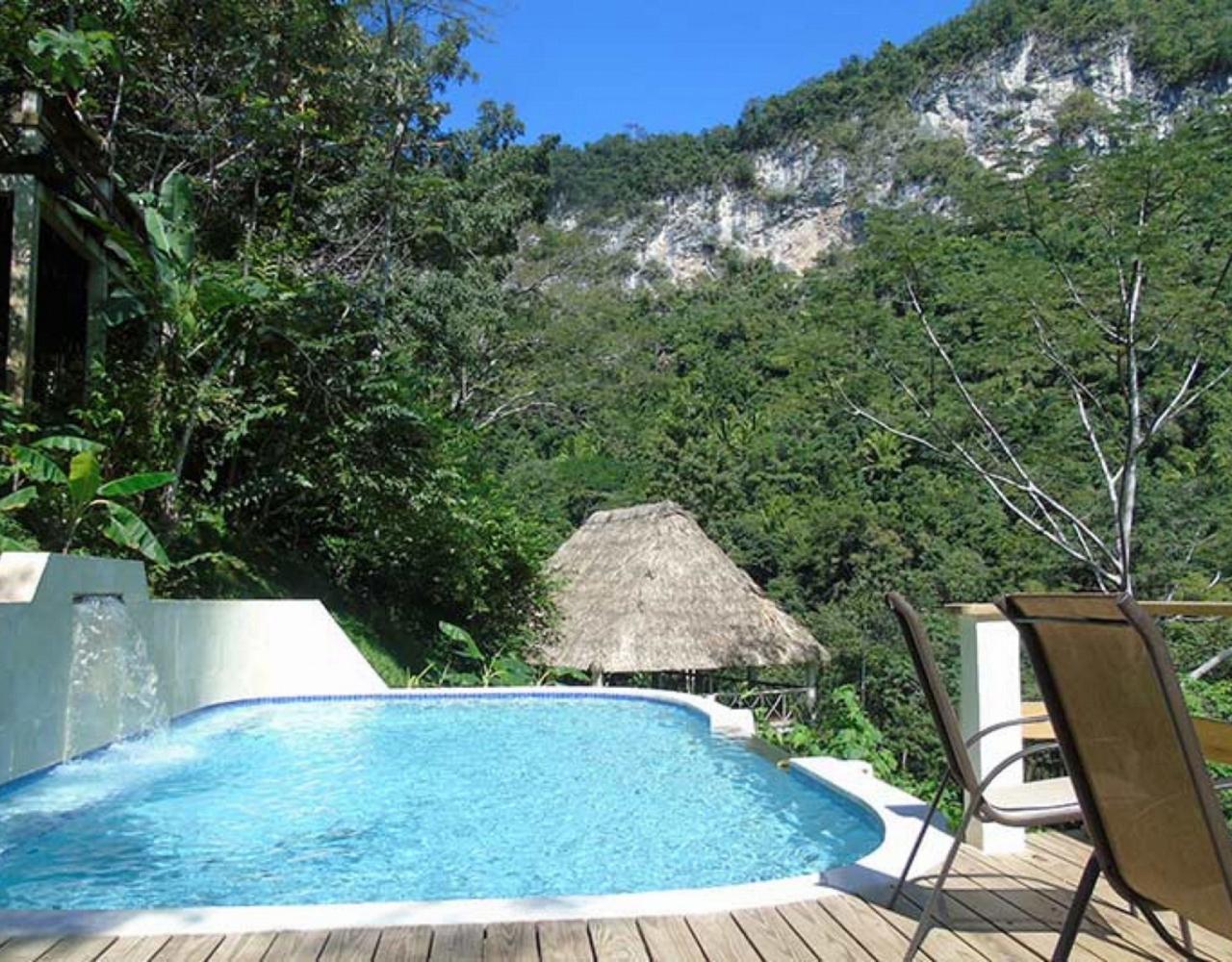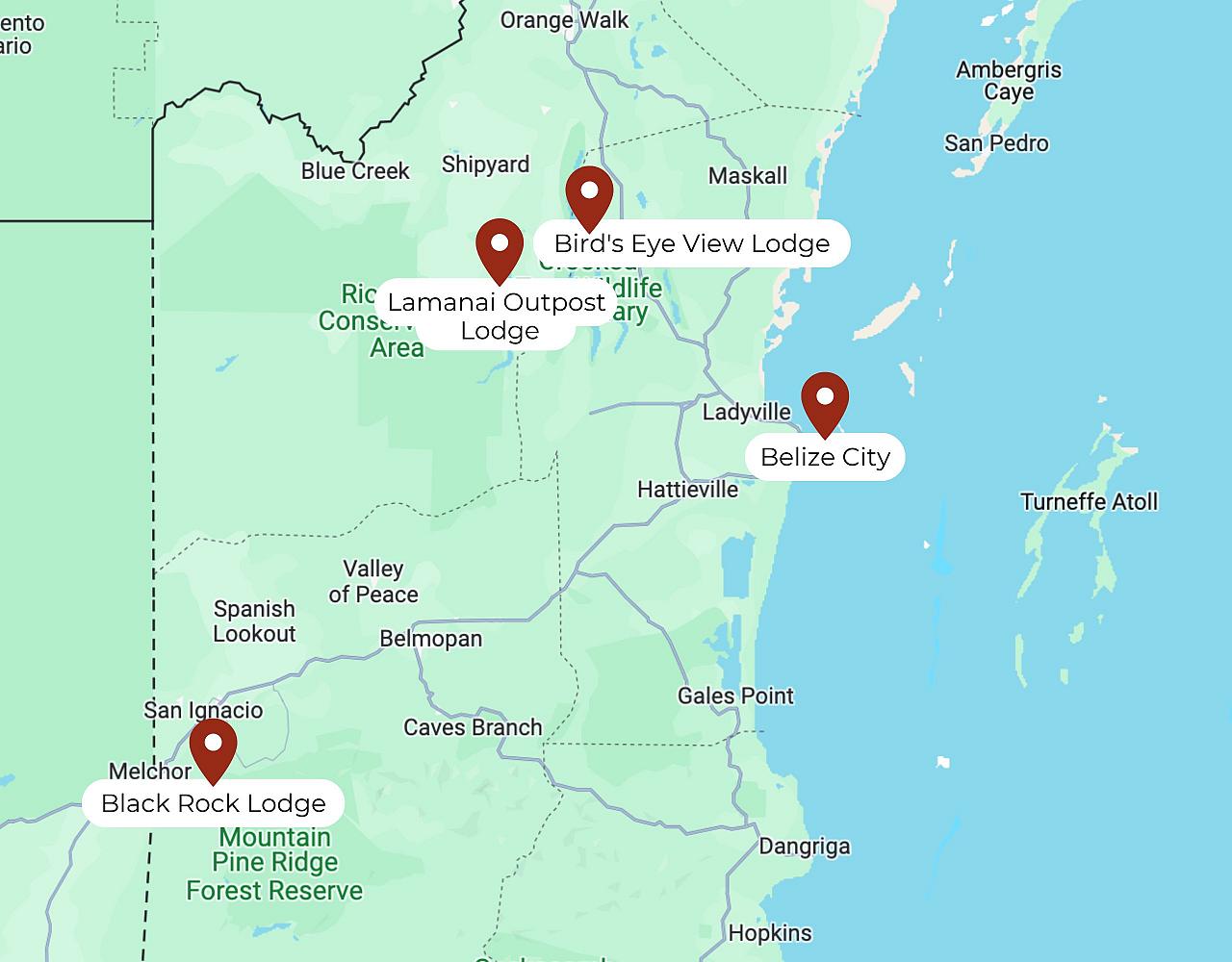Trip Itinerary
Itineraries are guidelines; variations in itinerary may occur to account for weather, road conditions, closures, etc. and to maximize your experience.
Tues., Mar. 18 Arrivals | Bird’s Eye View Lodge
Welcome to Belize! Your local guide meets you upon arrival today and transfers you to the beautiful Bird’s Eye View Lodge.
This lodge is located on the Crooked Tree Lagoon and boasts a list of over 300 bird species on the property. We can bird the lodge’s grounds today before kicking off the trip with dinner at the resort’s restaurant. Vermilion Flycatcher and quite a few Eastern warblers such as Yellow-throated can be seen, and on boat trips from here, the real prize is Agami Heron.
Accommodations at Bird’s Eye View Lodge (D)
Wed., Mar. 19 Crooked Tree Wildlife Sanctuary | Bird’s Eye View Lodge
After an early breakfast and coffee, we enjoy a morning boat trip in the Crooked Tree Wildlife Sanctuary. Barely an hour north of the airport, this refuge is one of the premier birding destinations for aquatic birds in Central America and is designated as a Wetland of International Importance under the Ramsar Convention.
A labyrinth of waterways and small islands, the refuge covers 16,400+ acres of creeks, swamps, and hummocks, including adjoining lowland pine savannas and tropical broadleaf forests. Watch for Morelet’s Crocodile and other reptiles, as well as Yucatan Squirrel and possible Neotropical River Otter.
Inland lagoons support an astonishing array of bird life. Peregrine Falcon, Black-collared Hawk, Great Black Hawk, and Snail Kite are raptor highlights, while across the lagoon, we look for long-toed Northern Jacana and Common Gallinule among the lily pads, with Black-bellied Whistling and Muscovy Ducks nearby. Overhead we may see Caspian and Gull-billed Terns, while the vegetation along the banks supports populations of Anhinga, Tricolored Heron, and Limpkin. Additional heron species may include Little Blue, Green, both night herons (Black- and Yellow-crowned), and possibly (hopefully!) Agami. Crooked Tree is also known for its Boat-billed Heron rookeries, which can be noisy, with birds vocalizing and bill-clacking. We also watch for Amazon, Green, Belted, Ringed, and even American Pygmy Kingfishers (the latter as small as a sparrow) perched above the water.
One of the key species we look for on the water is the Sungrebe. We also carefully watch for Jabiru storks, the tallest flying bird in Central and South America. Yucatan endemics include Red-vented (or Yucatan) Woodpecker, Yucatan Flycatcher, Yellow-lored Parrot, the raucous Yucatan Jay, and possibly even Black Catbird.
We return to the lodge for lunch, some down time, birding and photography at leisure on the grounds, and in the late-afternoon we go back out to enjoy an evening sunset tour by boat.
Accommodations at Bird’s Eye View Lodge (B,L,D)
Thurs., Mar. 20 Crooked Tree Lagoon | Lamanai Outpost Lodge
Wake up to a tropical chorus! After breakfast and a bird walk to look for any Yucatan endemic species we may have missed, we depart by van to meet up with our hosts from Lamanai on a dock site for the boat ride in to the lodge. Lamanai Outpost Lodge is our home for the next three nights and we can guarantee you won’t want to leave.
The transfer in to Lamanai is FUN. From the boat, we should see Mangrove Swallow, Limpkin, Northern Jacana, Swallow-tailed and Snail Kites, and, with luck, a Black-collared Hawk or a huge Jabiru. Be ready with a windbreaker, camera, and binoculars. We arrive in time for late-afternoon birding by the lodge and dinner.
Whether you’re well-traveled in Central America or visiting for the first time, there is much to hold your attention at Lamanai. Birds and monkeys busy themselves around the cabins; nearly 200 species of butterflies flit through the area, colorful dragonflies and damselflies buzz by, lizards ranging in size from tiny geckoes to five-foot-long iguanas lounge around, and of course, numerous herbs, shrubs, and trees attract wild tropical wonder.
Accommodations at Lamanai Outpost Lodge (B,L,D)
Fri., Mar. 21 & Sat., Mar. 22 Two Full Days Exploring from Lamanai Outpost Lodge
Overlooking the edge of the large New River Lagoon, Lamanai offers a fresh mix of birds. Some birds at the water’s edge are familiar: Neotropic Cormorant, Yellow-crowned Night-Heron, and Purple Gallinule. Others, like White-collared Seedeater, Mangrove Vireo, Ruddy Crake, or the delightful American Pygmy Kingfisher remind you that you have left the United States. Open-air dining lets you be immersed in nature; local foods and tropical fruits abound!
During our stay we take several boat trips. Canoe excursions offer relaxing and intimate wildlife views, and can be arranged for both day and night paddles. Such trips frequently produce an endangered Morelet's Crocodile, iguanas, and basilisk lizards, up to five species of kingfishers, Boat-billed Heron, Gray-necked Wood-Rail, and occasionally a rarity like an Agami Heron. At night, with the aid of spotlights, we look for several species of bats, Yucatan Nightjar, Yucatan Poorwill, and Northern Potoo.
One of the most interesting phenomena, and one we are likely to encounter at Lamanai, is an army ant march. Birds of many families attend these marches, eating the insects, frogs, lizards, and other organisms flushed by the foraging ants. Standing quietly at the margin of an ant swarm, we get close looks at faithful ant followers, including Gray-headed Tanager, Red-throated Ant-Tanager, and a number of woodcreepers, including Tawny-winged and Northern Barred. Other possibilities are White-whiskered Puffbird, several flycatchers, migrant warblers, and perhaps a Great Tinamou. Even birds of prey like the dainty Barred Forest-Falcon follow ant swarms?all so absorbed in the sea of insect life that they ignore our fascinated observation.
We also make sure to have time to see the impressive Lamanai Maya Ruins, and to explore the open savanna habitat, which affords us a good mix of species including Yucatan Woodpecker, Yellow-lored Parrot, the Petén race of Botteri’s Sparrow, and occasionally Aplomado Falcon.
Accommodations at Lamanai Lodge (B,L,D)
Sun., Mar. 23 Lamanai Outpost Lodge | Belize Zoo | Black Rock Lodge
We enjoy a last morning of birding and breakfast at Lamanai Outpost Lodge before departing by boat to return to the dock. From here we drive to meet up with our hosts from Black Rock who eagerly await us for they have new species and experiences in store.
Today is largely a travel day, and we have lunch at a lively local restaurant along the route. Our main stop today is at the Belize Zoo, an important conservation property with memorable Caribbean-style signage. Birds in the wild are present as well and it’s a fun and educational visit.
Black Rock Lodge emerged as the #1 Birding Hotspot in Belize recently, in no small part due to its dedicated team of guides and its prime location. The lodge has a central dining area and cabins at various levels between where you enter on a bluff down to the water’s edge. They keep their feeders full to attract a mix of species and people gravitate to a wide veranda with an open view to watch for raptors and other species. Settle in, we have three full days to explore.
Accommodations at Black Rock Lodge (B,L,D)
Mon., Mar. 24 Local Birding and Fun – Black Rock Lodge
Join the lodge’s keen birding guide for an early morning bird walk starting at 6:30 AM. Guides and guests avidly note their sightings on eBird, contributing knowledge of this region through citizen science efforts. We plan to participate too! Often greeting us in the morning are Crimson-collared and Yellow-winged Tanagers, Black-headed and Grayish Saltators, Red-legged Honeycreeper, and other species in mixed flocks. Barred Antshrike and Spot-breasted Wren call as Rufous-tailed Hummingbird monitor nectar at the garden flowers.
After taking advantage of the early super-charged bird activity on the grounds, we enjoy a full breakfast, never leaving the beautiful view as you dine. On the towering cliffs behind the lodge, a resident pair of Orange-breasted Falcon have lived for many years. Above, Vaux’s Swift patrol the sky. After breakfast we have the chance to continue birding the area; watch for some of the showy rainforest species such as Keel-billed Toucan, Collared Aracari, and parrots of several species including Red-lored, White-fronted, and Mealy. More secretive on trails through the forest, we scan for Scaly-throated Leaftosser, Pheasant Cuckoo, Tody Motmot, Gartered and Black-headed Trogons, White-necked Puffbird, and more. The lodge has an extensive trail system.
This afternoon we visit the Belize Botanical Garden. Located on the banks of the Macal River in the Maya Mountains, the gardens host 45 acres of tropical wonder. Orchids, palms, cycads, and edibles abound. Watch for Common Tody-Flycatcher, Rose-throated Becard, and both Sulphur-bellied and Royal Flycatchers. It’s a great place for birds, and butterflies too!
We return to watch sunset with a view and enjoy dinner. In the evening we venture out for a night drive to try our luck for nightjars, owls, and potoos.
Accommodations at Black Rock Lodge (B,L,D)
Tues., Mar. 25 Local Birding or Caracol Maya Ceremonial Center
Today you may choose from two activities. The group will head to Caracol (weather dependent due to rough roads), but if you prefer time out of the van, you can enjoy this lovely lodge at leisure.
Option One: Hike & Bird from the Lodge
There are many species close to the lodge where you can let the birds come to you, or hike a bit steep but productive trail with our local guides. Species we look for include Blue-gray and Yellow-winged Tanagers, Red-legged Honeycreeper, Blue Ground Dove, Roadside Hawk, Olive-throated Parakeet, Red-lored Parrot, Blue Bunting, Barred Forest-Falcon, Rose-throated Becard, Squirrel Cuckoo, and Black-cowled Oriole (just to name a few!). Enjoy some time to photograph at the feeders or along the river; walk the gardens and trails.
Option Two: Caracol Maya Ceremonial Center
This is a long, but incredible day. It’s also conditional on the road being dry enough to get to the ruins, since the road can be impassible if wet. After coffee and a quick bite this morning, we leave to reach Caracol during the cool of the day—the best time for birding and exploration of the site. En route we move from the well-drained granitic soils that favor pines to limestone substrates that give rise to broad-leafed forest, resulting in a significant change in avifauna. The birding on the drive is excellent, and we could have looks at Keel-billed Toucan, Ocellated Turkey, and possibly Laughing Falcon as we descend into the lower woodlands. At the river that divides the Mountain Pine Ridge from the rest of the Maya Mountains, we may even have a chance to glimpse the rare Scarlet Macaw.
Caracol is a famous Maya site within the remote Chiquibul National Park that rivals Guatemala’s Tikal in size and scope. Although loggers discovered the site in 1938, only in the last three decades has it been restored and opened to visitors. Walking the area today, we find a marvelous blend of nature and history, with lush broad-leafed forests intertwining and surrounding five plazas, numerous stelae, pyramids, hieroglyphics, and an astronomy observatory. Particularly stunning is the temple of Caana, or “Sky Palace”; at nearly 140 feet, it is one of the tallest known Maya structures. The Mayas here were at the peak of their influence during the latter part of the Classic Period, approximately 400 – 850 A.D. We explore both forest trails and Maya ruins, learning about the latest discoveries at Caracol, quite likely the city from which Guatemala’s Tikal was conquered in 562 A.D. The birding at Caracol is extraordinary and we hope to see Montezuma Oropendola, several parrots (including White-crowned, Brown-headed, and Red-lored), all three species of Belizean motmots (Lesson’s, Tody, and the rare Keel-billed), Black-cheeked Woodpecker, Collared Aracari, and the colorful Crimson-collared Tanager. The area also supports Great Curassow and Crested Guan. The exceedingly rare Lovely Cotinga, perhaps Belize’s most colorful songbird, is occasionally observed here, and scarce raptors like Ornate and Black Hawk-Eagles have also been reported at Caracol.
After our picnic lunch we head back to Black Rock Lodge, stopping along the way at the Rio Frio Cave with its quiet pools and impressive formations. The shaded forest trails leading to the cave offer the chance to observe seldom seen understory species like Orange-billed Sparrow and White-throated Robin, as well as both Red-throated and Red-crowned Ant Tanagers (not often seen together) and possibly Plain Xenops, a tiny acrobatic species that gleans insects from the underside of leaves. Upon our return to the lodge, we relax or stroll the lodge grounds for the rest of the afternoon, and then meet up with the rest of the group to review our bird list for the day before enjoying another excellent dinner.
Accommodations at Black Rock Lodge (B,L,D)
Wed., Mar. 26 Green Hills Butterfly Ranch | Explore the Pine Ridge Habitat
This morning after some time at the feeders and watching from Black Rock’s amazing veranda, we head out for the day. Our first stop lets us walk and view a number of active feeders at the Green Hills Butterfly Ranch, where we see a host of hummingbirds at close range. Species include White-necked Jacobin, Long-billed Hermit, Green-breasted Mango, Canivet’s Emerald, and possibly both Wedge-tailed and Violet Sabrewings. We also find a grand array of other birds walking through the lush gardens.
We then venture up onto a higher elevation plateau that holds extensive Caribbean pine stands. Yellow-backed and Yellow-tailed Orioles, Acorn and Golden-olive Woodpeckers, Green Jay, Ferruginous Pygmy-Owl, Masked Tityra, Slaty-tailed Trogon, and Plain Chachalaca, as well as several hummingbirds, including Azure-crowned, can be found here. Neotropical migrants overwinter here, too (including ”southwestern” birds such as Greater Pewee, Grace’s Warbler, and Hepatic Tanager), and some or all of these should be active when we arrive. Watch for King Vulture overhead. In this area we may find Rufous-capped Warbler, Yellow-faced Grassquit, Gray-crowned Yellowthroat, Yellow-bellied Elaenia, Dusky-capped Flycatcher, Collared and Black-headed Trogons, Pale-vented and Scaled Pigeons, various woodcreepers, and noisy flocks of Lesser Greenlet.
We enjoy a picnic lunch, some grand scenery, perhaps another chance to see rare Orange-breasted Falcon and in the afternoon head back to the Lodge. Freshen up, and take in the view from the veranda for a last time.
It’s hard to believe our adventures have gone by so quickly. After dinner we gather to share trip highlights and tally up our final sightings.
Accommodations at Black Rock Lodge (B,L,D)
Thurs., Mar. 27 Black Rock Lodge | Departures
After breakfast, we leave Black Rock Lodge as a group to head to the international airport. Please schedule return flights for 12:30 PM onwards, figuring you need to be at the airport 2.5 hours ahead of your flight. (B)
Essential Information +
This information is important for being prepared for your journey; we want you to have Read more
This information is important for being prepared for your journey; we want you to have the best experience possible. If you only read one section, this one is key!
Ahead of your tour:
- Make sure your passport will be valid during the dates of your stay, however, we suggest at least three months validity beyond the date of your scheduled return to the U.S. See "Passport, Visa & Documentation" section below.
- No Visas are required for U.S. citizens for stays of this tour's duration in Belize. If you are from another country, please contact the Belize embassy website for guidelines.
- Please check current CDC recommendations for travel to Belize and consult with your doctor about general travel vaccinations you should have as precaution for travel. See the “General Health and Inoculations” section below.
- Travel insurance in case of serious medical emergency is strongly recommended. Full health coverage and repatriation is available through Allianz Travel Insurance.
- Plan your international flight reservations to arrive into and depart from Philip Goldson International Airport (BZE). Send a copy of your itinerary to the Naturalist Journeys office please.
- Soft sided luggage/duffel bags are easiest for packing the vans. Pack essential medications in your carry- on luggage, as well as one day of clothing and optics in case of luggage delay.
Arrival into Belize City, Philip S. W. Goldson International (BZE)
Please note. If you are delayed in travel, please FIRST call the number of our Belize operator. As a backup, contact our office (these numbers are on your emergency contact list).
We will coordinate your pick-ups close to your departure, and once we have all travelers completed travel information. Please make sure we have both your ARRIVAL and DEPARTURE information, so they can plan this. It is imperative that we have your correct TRAVEL information; we appreciate if you email us a copy of your flight reservation. They will check internet for your updated flight information.
Please plan to arrive into Philip Goldson International Airport in Belize City no later than 2:00 pm. Upon arrival and entering the terminal building, you will come to Immigration and then Baggage Claim and then the Customs Area.
- For Immigration, get into one of the lines for Visitors and have a copy of your hotel emergency contact list so when they ask where you are going, you have the data handy. Take a photo of this on your phone if easier for you ahead of the tour and know where you are going. After your passport has been stamped for entry, you will enter the luggage claim area.
- For baggage, have your claim stubs handy, many countries want to see these as you exit.
- For Customs, you will notice that there are two routes to exit through customs with your claimed luggage. For most of you, the exit marked “Green Line” will be your way out of the terminal. However, if you have anything to declare at customs, you must follow the “Red Line”. The “Green Line” bypasses the customs procedure to save you time. It is not always open; in which case you go through the normal “Red Line”.
Your guide will meet you upon arrival to baggage claim, and bring you to the first night hotel.
The local representative, or the front desk of your first night hotel, will have a packet with your itinerary, local information, and any schedule announcements you may need. Our guide for the journey will provide you with an overview of your trip at an orientation meeting the first night of the trip, or the first breakfast following, depending on client arrival times.Please make yourself at home at your first night hotel– the front desk staff will assist you.
Please check the Travel Details tab of this tour main page for additional information and updates.
Departures from Belize City, Philip S. W. Goldson International (BZE)
You have to be at the airport about three hours ahead of your scheduled flight on this return, so we do not advise booking early morning flights; after 1pm is recommended.
We will provide transfers or arrange for taxis to the airport for all departures as needed for the departure day. The departure fee is now typically built into your airline fare.
Please check the Travel Details tab of this tour main page for additional information and updates.
Passports, Visas & Documents
Guidelines and regulations can change. It is always advisable to double-check the country’s documentation requirements 60-90 days ahead of traveling. Information for U.S. citizens can be found at https://travel.state.gov/content/travel/en/international-travel/International-Travel-Country-Information-Pages/Belize.html. If you are from another country, please contact the tour destination’s embassy website for guidelines.
Passport: At the time of writing, U.S. citizens must have a passport that is in good condition and at minimum is valid at the date of entry through your scheduled return to the U.S. However, we highly suggest at least 3 months validity beyond the end of the tour to allow for unexpected delays in return travel. Please check that expiration date! You should have at least one blank page per entry stamp. The blank pages need to say “Visas” at the top. Pages marked “Amendments and Endorsements” will not be accepted.
Visa: At the time of writing, a tourist visa is not required for stays of this tour's duration. You will need proof of a return ticket. The necessary documents will be distributed by your airline while in flight or provided for you upon arrival. We advise that you bring your eContact list of hotels for use at immigration as well.
As a precaution for lost or misplaced documents you carry on your person during travel, we highly recommend you keep hard and digital backup copies on your phone (either photo or PDF scan), as well as a hard copy left with your emergency contact at home. The recommended important documents to copy include, but are not limited to; your passport ID page, travel visa, the front and back of your credit card(s), the airline barcode on your luggage. This will greatly expedite getting new ones if necessary – we hope everyone will always keep travel documents close so that losing them will not be an issue.
General Health & Inoculations Information - Be Prepared!
Health requirements for entry to any country can change. It is always advisable to double-check the country’s health requirements and recommendations 60-90 days ahead of traveling. A helpful website for planning is the Centers for Disease Control and Prevention (CDC) website for Belize or by phone (800) CDC-INFO or (800) 232-4636.
We will share your health information with your guide. This information will be kept confidential but is very important as we want to be best prepared in case of medical emergency.
Anti-malarial drugs are not required for any area that you visit. There are occasional reports of Dengue Fever in lower elevation areas, for which there is no vaccine. Dengue fever, Zika, and other diseases are contacted by mosquito bites so be sure to use mosquito repellant containing DEET or Picaridin. At the time of writing, the risk of malaria is perceived to be low in Belize. The best precaution is to dress with long sleeves and spray up. More information can be found at https://redplanet.travel/mdtravelhealth/destinations/belize
Vaccinations: Please bring your up-to-date vaccination records with you. The Centers for Disease Control and Prevention (CDC) recommends that all travelers be up to date with routine vaccinations and basic travel vaccines (such as Hepatitis A and Typhoid) before traveling to any destination. Please check with your doctor for recommendations at least 4- 6 weeks before departing on your trip.
Prescriptions: It is a good idea to pack any meds you take regularly in your carry-on luggage. Bring an extra pair of glasses or contact lenses. Bring an adequate supply of any prescription medications you use, a copy of the prescription and a list of generic names of your medicines as “back-up” in case it is necessary to purchase drugs while abroad. You’ll want to keep medications in their original, labeled containers.
Allergies: To be prepared for environmental triggers to allergies or breathing difficulties, please bring your allergy and/or asthma medication(s). If you have severe allergies talk to your doctor about carrying an EPI pen and notify your guides. It is also recommended to carry with you an up-to-date record of known allergies, chronic medical problems and Medic Alerts so that, if necessary, emergency treatment can be carried out without endangering your health.
Common Ailments: We recommend that you bring a travel-sized first aid kit and a supply of standard over-the-counter medications for prevention or treatment of common ailments (such as diarrhea, constipation, stomach upset, cough, congestion, head or body aches, motion sickness, insect bites and sunburn); as well as ointments, moisturizer, sunscreen, oral rehydration salts, band-aids, moleskin for blisters, cotton swabs, nail clippers, and tweezers, etc.
Daily Itinerary
We generally follow the published itinerary but do network with other guides and may make changes if we hear of great bird sightings or a new opportunity. The joy of our travel is tremendous flexibility, and we make every effort to do the things you particularly want to do. Your guide will keep you apprised of the next day’s schedule at each evening meal, noting what to bring and what to prepare for. Questions and/or concerns are welcome.
The pace of the trip is moderate, with some early morning departures, extensive field time and now some options for hikes. It is also easy to take it at a vacation pace! You can pace yourself within our typically active schedule.
Weather & Climate
The climate in Belize is tropical, and in general, the weather during your stay should be humid with warm to hot temperatures (75-90°F) in the lowlands, but can cool off into the high 50°Fs to mid-60°Fs in the early morning and evenings. The hot and rainy season ranges from June-October, while November-February have slightly cooler temperatures (though still warm and tropical!) with tapering rainfall. February-May begin with the dry season, that eases into the hotter and wetter summer months. Be sure to remember your rain gear, as the rain, at times, may be quite intense - a light rain jacket or poncho is good and YES do bring an umbrella. Boat tours when there is cloud cover can be cool. Your raincoat can double as a layer to combine with a light jacket possibly some evenings.
Annoyances & Hazards
Mosquitoes can occur in the forests; therefore, a supply of insect repellent containing DEET is essential. At grassland or farm locations you will encounter chiggers, if so, spray your shoes with repellent, and tuck your pants into your socks, this helps a lot. When back, be sure to shower and air out your clothing. Chiggers are a part of lowland and mid-elevation habitats throughout Central and South America. Your guide should have a good read on if it has been wet enough that they are active. There can also be poisonous snakes and insects, though encountering them is rare. Do listen carefully to any advice given by your local guide. And remember the sun is strong and be prepared with proper protection.
Food & Drinks
Menus at lodges and restaurants are varied, sustainably based on the wonderful local ingredients available, and delightfully prepared in a sanitary environment. As with any case when traveling we urge you to consider what your body is used to before you eat something. Trust your common sense when consuming food and beverages. This is the best way to avoid any unwanted problems. Ask for recommendations from your hotel or refer to a guidebook such as Frommers. Meals reflect the contributions of American, European, Spanish, and local cuisines.
The CDC considers tap water in Belize not safe to drink. Bottled water will be available for field trips and drinking water is provided for you to refill a bottle. One of the many ways we strive to do our part for the environment is by trying to reduce our consumption of plastics; if convenient we appreciate if you can bring reusable water bottles.
Packing, Clothing & Laundry
Dress is very informal and laundry services are available for a fee at our lodges. While some people will change for dinner, it is usually just to a drier or cleaner version of what they wore during the day. Again, the climate is warm to hot, so you will be comfortable in lightweight clothing.
Please, pack light. We are serious about this – we move around a lot; you just do not need much to cope with tropical life! Please do not bring anything more than you must. Lay out your hopeful things to take and then do a serious paring down please! Hair dryers are available at most Lodges.
TRAVEL TIP: Imagine NOT getting your suitcase. Wear your most important shoes for the field and have one day’s clothing change (including a change of underwear!). And please do not pack any essential medications, or your vital optics, in your checked luggage!
Spending Money
The official currency in Belize is the Belizean Dollar. We advise you carry a mix of different types of payments, such as cash, an ATM card, and a credit card. For the current exchange rate, please refer to an online converter tool like www.xe.com, or your bank. U.S. dollars in good condition (no rips or tears) are taken as a form of payment but shopping for smaller handicrafts may necessitate using local currency. If you have U.S. dollars, then there is no need to exchange currency before your trip since it is accepted at almost any business. If you would like local currency, you won’t need to exchange much money since you can use U.S. dollars at most places. You will be able to change money after your arrival at banks or hotels, though ATM machines are available in Belize City at the airport. Out of the airport they are infrequently available.
When using the ATM to withdrawal cash, keep in mind it might only accept cards from local banks or not allow cash advances on credit cards. Many U.S. banks charge a fee of $1 - $5 each time you use a foreign ATM. Others may charge you a percentage of the amount you withdraw. Check with your bank before departure. You must become familiar with how to use your ATM card and PIN number ahead of the journey.
Major credit cards are accepted in Belize. We suggest you have more than one card available, if possible. You may want to bring more than one brand of card (VISA and Mastercard are commonly accepted; American Express is less common). You can use credit cards at lodges to pay your bar and gift tabs. Not every shop will accept every card. Some smaller shops and restaurants, or taxis require cash, so it is always a good idea to ask before making a purchase. Also, we recommend that you advise your bank or credit card company that you will be traveling abroad to avoid questions, card freezes, or charges. If you have a choice of cards, bring one with no foreign exchange fees.
Traveler’s checks are not widely accepted. They can be difficult to exchange. We do not advise you use them.
Gratuities
Tipping is optional and completely at your discretion. If you would like to show our appreciation to your guides, lodge and hotel staff or anyone associated with this tour, it is entirely appropriate. Know that they appreciate anything you care to give and of course you can do more if you wish! Lodges normally have a box for tips that the staff share, and hotels you would just tip the maids as you do at home. We hope that you will be pleased with all professional services.
Here is a standard suggestion for tipping on birding trips:
- Birding tour guide: US $10.00 - $15.00 per day per guest
Note: If there is more than one guide, this can be split among them, so that is a total, per person, per day
- Tour driver if different from guide: US $5.00 - $7.00 per person/day
- Lodge staff: US $6.00 - $10.00 per day per guest
- Transfer (airport shuttle) driver: US $2.00 - $3.00 per person
- Hotel & international airport bellmen: US $1.00 per suitcase
You may wish to bring small gifts for local people that you meet and enjoy (this is totally optional!). T-shirts, school supplies like pens and small notebooks, inexpensive watches and baseball caps are always popular. Your guides can pass along school supplies to a local school if you bring them. They also love any nature books/coloring books.
Cell Phones & Internet Service
Your guide is well connected and can help if any urgent communication need arises. However, it is highly recommended that you travel with a cell phone, if only as a precaution for the unfortunate occurrence of a medical emergency during an outing and needing swift accessibility to critical personal or medical contacts.
Please check with your wireless provider to see if your phone and service will work in your destination country. Options include activating international roaming, purchasing a local SIM card at the airport (newer phones may not accept SIM cards), or simply turning off cellular service and relying on Wi-Fi to make calls and access the internet. If your phone can connect to Wi-Fi, you may be able to make voice and video calls free of charge. Another option if you have access to Wi-Fi is to use smartphone apps like Skype, WhatsApp, or Viber to send text messages, and make voice calls, or video calls. Many smartphones, tablets, or laptops come with one of these apps pre-installed or you can download for free.
Your hotels and most local restaurants provide Wi-Fi at least in their common areas. Although it is generally a reliable service, it can be affected by adverse weather conditions due to the remote location.
Make sure if you do NOT want to use your cell phone that you turn off your cellular data. You could incur huge charges if you are not on Wi-Fi. Putting your phone in airplane mode if you mainly use it for photos will save the battery as well.
Please refrain from taking or making cell phone calls in the vehicles when traveling with other passengers, unless it appears to be an emergency. This disrupts other guests, plan on cell phone call use on your own time.
Electricity
The standard in Belize is the same as in the United States and Canada: 110 volts AC (60 cycles). Plugs are set up in the same style. However, three-pronged outlets can be scarce and existing three-prong outlets may feature even-sized flat blade plugs, so it's helpful to bring along adapters for both two- and three-prong outlets. For more information: www.power-plugs- sockets.com/belize
Time
Belize does not observe daylight savings time and is on the same time as our Central Zone in the U.S. A great website if you want to tell someone to check ahead of calling you is www.timeanddate.com.
Questions?
Please contact Naturalist Journeys by email at clientservices@naturalistjourneys or telephone at our office: (520) 558-1146 or toll free: (866) 900-1146 if you have any questions. Many thanks for traveling with us and we hope you enjoy your journey!
Pace & Protocols +
Pace of the Tour & What to Expect
You will receive a Schedule-at-a-Glance and list of Read more
Pace of the Tour & What to Expect
You will receive a Schedule-at-a-Glance and list of hotels (our eContact List) a few weeks before your departure. This will serve as an outline for each day and alert you to any recent changes made in the schedule or to our hotels, if needed.
Our journeys are set up to follow the rhythm of nature. Our focus is on birding and nature; we offer full, well-planned field days and often get up early for that magical time around dawn. We generally follow the published itinerary, but we stay flexible to the weather, wildlife opportunities and the interests of the group. Your guide will keep you apprised of the next day’s schedule at each evening meal, noting what to bring and what to prepare for. Questions and/or concerns are welcome.
The pace of our Naturalist Journeys tours is moderate; to fully participate you should be able to get in and out of vehicles several times a day, and walk 1-3 miles over uneven terrain. It is important to participate with a flexible attitude as adjustments may be made in our schedule to make the most of our time in the field or for other purposes at your guide's discretion. We are not a “listing” bird company that drills down on target species, but at times we do wait for those special species unique to the places we visit. During the day, we take time to stop for photos and for educational opportunities to learn about conservation projects, landscapes, and geology. We appreciate other taxa as well as birds, with mammals often the biggest draw but plants and butterflies are also very popular. Our clients often lend their own expertise to the mix.
We like to make meals a fun and memorable part of the experience, too. Breakfasts are often at hotels, and we carry snacks, fruit, and water in the vans each day. Lunches are a mix of picnics in the field (weather dependent) and a chance to dine with locals at small cafes and restaurants. For dinner, we pride ourselves in our homework to keep up with the best choices for dining, choosing restaurants with atmosphere that specialize in local foods. On occasion we keep dinner simple to go back out in the field for sunset wildlife viewing or night walks. In some remote locations, our choices are limited. If you are tired, room service for dinner may be an option you can choose.
Naturalist Journeys International Trips: Guide Role
Naturalist Journeys supports ecotourism and the development of excellent local guides. Once we know our international partners and guides well, we can send out small groups working directly with these trusted partners, adding a Naturalist Journeys guide to assist the local expert when we have a group of 6-7 or more. This helps us keep your costs down while retaining tour quality. The local guide is your main guide. You can expect your Naturalist Journeys guide to be well-researched and often they are experienced in the destination, but their role is not to be primary, it is to help to organize logistics, help you find birds, mammals, and interesting other species in the field, keep reports, help facilitate group interactions, and to keep the trip within Naturalist Journeys' style. Local guides live in the countries we travel to, know the destinations intimately, and are often the strongest force for conservation in their countries. They open many doors for us to have a rich experience.
Smoking
Smoking is not permitted in any vehicle or in any situation where the group is participating in an activity together, such as a vehicle excursion or a guided walk. Please respect all designated smoking areas at hotels and restaurants.
Transportation
As a courtesy to each other, we ask that all travelers please rotate seating. On international trips we may all be in one small bus, on some trips we are in vans, particularly the roomy Sprinter Vans when available. Some areas require us to be in smaller 4-wheel drive or safari vehicles. Rotation allows you to sit with different drivers and alternate front and back seating.
Photo Release & Sharing
We take many group photos and will share photos with the group. And after your tour, we will organize a chance to share photos via Dropbox or Google Photos. Please note that this is our policy and if you prefer to be excluded, we need to know ahead of your tour.
By registering for this tour, you agree to grant to Naturalist Journeys and its authorized representatives’ permission to record on photography film and/or video, pictures of my participation in the tour. You further agree that any or all of the material photographed may be used, in any form, as part of any future publications, brochure, or other printed materials used to promote Naturalist Journeys, and further that such use shall be without payment of fees, royalties, special credit or other compensation.
Travel Insurance
You are traveling in remote areas. Naturalist Journeys strongly recommends you have full medical and evacuation insurance from a company such as Allianz, for all international travel. If you do not have medical coverage or evacuation coverage on your existing travel insurance policy or for some reason elected not to take that out, we advise getting an evacuation plan with Global Rescue, World Nomads, Medjet, Allianz (they can do evacuation only) or a similar company. These plans are typically $300-$400 for a year for multiple destinations. This coverage may be a part of a larger Travel Insurance policy but can also be purchased on its own.
Questions?
Please contact Naturalist Journeys by email at clientservices@naturalistjourneys.com or telephone our office: (520) 558-1146 or toll free: (866) 900-1146 if you have any questions. Many thanks for traveling with us and we hope you enjoy your journey.
Packing List +
Please Pack Lightly!
Soft luggage is much easier for us to pack than a more rigid Read more
Please Pack Lightly!
Soft luggage is much easier for us to pack than a more rigid hard sided piece, so if you have the choice, please use your soft luggage. Be sure your name and address are printed on the inside of the bag as well as on the luggage tag. Be sure to pack your personal medication, airline tickets, identification, binoculars, camera, and other essential items in your carry-on bag. Your carry-on bag must be able to fit under the seat, or it will be taken away by airline staff and put with the regular luggage. You will want a daypack for field trips, so this is the ideal carry-on. We recommend that you check with your airline a week or so before your departure regarding luggage weight and size restrictions.
In general, the weather during your stay should be warm to hot (75-90°F) in the lowlands, but at least 20° cooler in the early morning and evening. Check your favorite weather website closer to your departure to better predict what the weather will be on your adventure.
Dress is comfortable and informal throughout the trip. Dressing in layers is the best way to be comfortable. Lightweight long sleeve shirts and long pants make ideal field clothing as they are more protective from sun and vegetation. But if you like to wear them, you can bring shorts. Choose clothing you don’t mind getting dirty or muddy and things that are comfortable and easy. A light jacket should be enough in the cooler evenings and on boat rides. Water shoes are great when on the boats.
Note on clothing colors and insect repellent: We recommend muted colors of tan, brown, khaki, grey or green, as they are spotted less easily than white or bright colors, though camouflage clothing is not recommended, and in some countries, not legal to wear. It is possible to purchase field clothing permeated with insect repellent such as the Craghoppers Insect Shield collection. Another approach is to purchase Permethrin spray (online or from REI) to treat your field clothing and socks before your departure.
Clothing & Gear
- Lightweight long pants, 2 pair
- Lightweight long sleeve shirts – 2 or 3
- Shorts
- T-shirts or equivalent (1 per every other day recommended – remember you may buy some there!)
- Personal underclothing
- Socks – lightweight and easy to wash and dry
- Comfortable walking/hiking shoes such as tennis shoes
- Lightweight hiking boots. Please note that forest trails will be on uneven terrain and may be muddy – good tread and support are essential!
- Sandals for evenings, travel days, and for wearing on boats (optional, TEVA style are great)
- Lightweight raincoat or poncho
- Lightweight jacket, fleece fabric is ideal
- Comfortable clothes for evening (a cleaner version of your field clothes or a skirt, sundress, etc.)
- Bathing suit
- Hat with broad brim
- Bandana (optional, great for cooling off when you are hot and sweaty. They even make them with a gel inside for several hours of cooling)
- Field vest (optional), a great source is Big Pockets
Equipment & Miscellaneous
- Airline tickets or E-ticket verification
- Passport, visa (if required), travel insurance info, money & credit cards.
- A secure pouch to carry the items above on your person at all times (such as a secure, under-clothing document pouch)
- As a backup: copies of all the above (phone and/or paper) packed in a separate location than on your person, plus a set given to your emergency contact at home as a backup. For passport, copy of the ID and entry stamp pages.
- Small daypack to carry gear while hiking
- Cell phone and charger
- Binoculars
- Camera and charger/extra batteries, memory cards/film, lens cleaning supplies and instruction manual (optional)
- Spotting scope and tripod (optional – guide will have them)
- Tablet/laptop for personal use and/or transferring photos, USB stick, USB cord and charger (optional). If bringing a laptop or tablet, bring a good dustcover to protect it at all times.
- Umbrella – compact and not brightly colored
- Walking stick – we find that many travelers appreciate a walking stick on trails, sporting goods stores carry collapsible models that pack easily in your suitcase (optional)
- Small flashlight with fresh batteries. Please note that if you like to read at night, lighting in other countries is often poor in the rooms, and you may want to bring a booklight, headlamp, or flashlight for this purpose, and for navigating dark pathways back to your cabin at night from dining areas.
- Alarm clock
- Sunscreen/lip balm with SPF
- Sunglasses with neck strap
- Insect repellent (something containing DEET, and sulphur powder or other for chiggers (try a garden store)
- Toiletry articles
- Water bottle (or plan to refill one bought on location)
- Notebook or journal and pen (optional)
- Field guides (optional)
- Sink plug (often not available, a flat universal one is easiest to use)
- Washcloth (again, available some places and not at others)
- Laundry soap if you plan to do hand washing
- Earplugs – in urban and even rural areas barking dogs and traffic noise can be annoying
Rechargeable power bank (optional)
- Snorkeling gear if at a beach lodge (available on sight as a rental, additional cost. If a regular snorkeler, you will want to bring your own mask and snorkel, perhaps rent fins)
- Steri-Pen or other UV water treatment device to help cut down on the use of plastic bottles (optional)
WE DO NOT RECOMMEND TRAVELING WITH PRECIOUS OR VALUABLE JEWELRY – don’t tempt anyone and don’t bring things you’d regret losing - your mind will be at ease!
Medical & First Aid
- Motion sickness preventatives if likely to be needed on bus, van, drives, etc.
- Personal medication (and copy of vital prescriptions)
- Personal first aid kit and medications for general ailments (Imodium or Lomotil, antihistamine cream or tablets, eye drops, etc.)
- Copy of eyeglass prescription, copy of medical prescriptions, and any medical alerts
- Heath insurance and vaccination information (kept in personal pouch with other travel documents)
- Extra pair of eyeglasses or contacts
- Band-aids, moleskin to protect against blisters
- Antibacterial hand soap or hand sanitizer, small vial
Suggested Reading List +
These books are, of course, optional, but recommended to help you get the most out Read more
These books are, of course, optional, but recommended to help you get the most out of your trip.
Top Picks
Birds of Belize
Merlin App – Belize Pack. A phone-based birding app from Cornell University Laboratory of Ornithology. Before departing the U.S., download the app for free, then from within the app, download the “pack” for Belize
Lonely Planet Belize 8
General Reading
A Natural History of Belize: Inside the Maya Forest
Maya Nature, an Introduction to the Ecosystems, Plants and Animals of the Mayan World
Field Guides
Birds of Belize
A Guide to the Birds of Mexico and Northern Central America
Birds of Mexico and Central America
Birds of Central America: Belize, Guatemala, Honduras, El Salvador, Nicaragua, Costa Rica and Panama
A Field Guide to the Mammals of Central America and Southeast Mexico
A Swift Guide to the Butterflies of Mexico and Central America
A Field Guide to the Amphibians and Reptiles of the Maya World: The Lowlands of Mexico, Northern
Wildlife & Nature
Belize: Reefs, Rainforests and Mayan Ruins
Belize and Northern Guatemala
Birds of Tropical America: A Watcher's Introduction to Behavior, Breeding, and Diversity
The New Neotropical Companion
A Naturalist’s Guide to the Tropics
Nature of the Rainforest: Costa Rica and Beyond
The High Frontier: Exploring the Tropical Rainforest Canopy
Life Above the Jungle Floor
History & Culture
Frommer’s Belize
Moon Handbooks, Belize
Understanding Belize, a Historical Guide
Insight Guides, Belize
Belize in Focus; A Guide to the People, Politics and Culture
Chilies to Chocolate: Foods the Americas Gave the World
The Lords of Tikal
Tikal, An Illustrated History of the Ancient Mayan Capital
Time Among the Maya
Lost Cities of the Maya
There is a good selection of books available for sale at visitors’ centers, and your guide will also have a selection of reference books and materials for participants to share. As an Amazon Associate, Naturalist Journeys earns from qualifying purchases, and may get commissions for purchases made through links on this page at no added cost to you.
Useful Links +
Learn more about your destination at these external websites, carefully researched for you. Read more
General
Belize
Nature, Wildlife & Biology
Belizean Pine Forests - a Caribbean pine dominant ecoregion
eBird.org - Belize
eBird Hotspot - Lamanai Outpost Lodge
eBird Hotspot - Black Rock Lodge
Audubon - Birding and Ecotourism in Belize
Belize total country bird list with status
Birds of Belize –iNaturalist
Endemics of Belize
List of Butterfly species from Wikipedia
Hummingbirds of Belize
Yucatán Black Howler Monkey
Conservation
Crooked Tree Wildlife Sanctuary
Green Hills Butterfly Ranch
Belize Foundation for Research and Environmental Organization
Convention on Biological Diversity – Belize
Belize Zoo and Tropical Education Center
National Geographic article – “The Struggle to Protect a Vital Jaguar Corridor”
Geology & Geography
Geology of Belize
Geography of Belize
History & Culture
Maya Civilization
Lamanai - Mayan Archeological Site
Caracol Mayan Ruins (optional excursion)
National Geographic Article “Who Were The Maya?: Decoding The Ancient Civilization’s Secrets”
History of Belize
Culture of Belize
Belize Country Profile – BBC News
Belizean Cuisine
Helpful Travel Websites
Philip SW Goldson International Airport (BZE)
National Passport Information Center
Homeland Security Real ID Act
Transportation Security Administration (TSA)
ATM Locator
Foreign Exchange Rates
U.S. Department of State International Travel Information – Belize
Canada Travel and Tourism - Belize
Travel Health Pro (UK) - Belize
Centers for Disease Control (CDC) - Belize
Electricity and Plugs - Belize
Date, Time, and Holidays - Belize

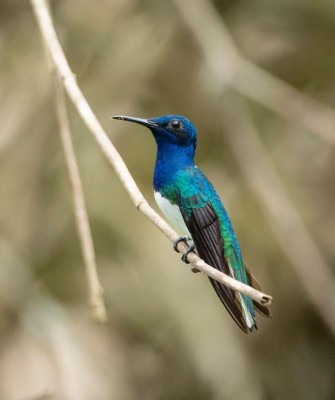




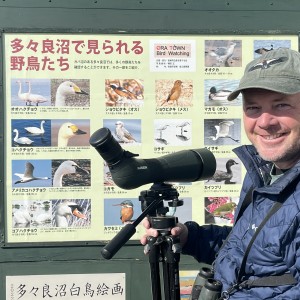
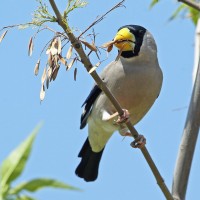 Japan in Spring: From the Ryukyu Islands to Hokkaido A private tour for friends of Carlos Sanchez.May 29 - June 12, 2025
Japan in Spring: From the Ryukyu Islands to Hokkaido A private tour for friends of Carlos Sanchez.May 29 - June 12, 2025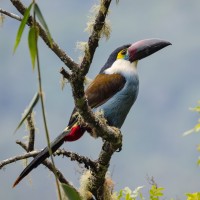 Birding from Bogota A Short & Sweet Colombia TourJuly 28 - August 3, 2025, w/Chingaza National Park extension
Birding from Bogota A Short & Sweet Colombia TourJuly 28 - August 3, 2025, w/Chingaza National Park extension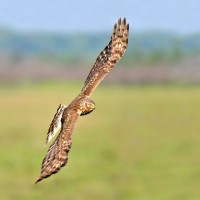 Nevada's Great BasinAugust 27 - September 3, 2025
Nevada's Great BasinAugust 27 - September 3, 2025 South Africa: Birding & Wildlife Safari FULL - Check out Tanzania: Wildlife & Birding Safari in October!September 16 - 30, 2025
South Africa: Birding & Wildlife Safari FULL - Check out Tanzania: Wildlife & Birding Safari in October!September 16 - 30, 2025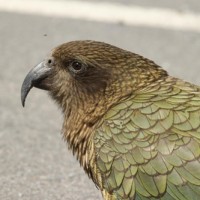 Birds & Nature of New ZealandOctober 8 - 24, 2025
Birds & Nature of New ZealandOctober 8 - 24, 2025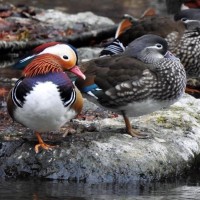 Japan Birding & Nature December 1 - 17, 2025
Japan Birding & Nature December 1 - 17, 2025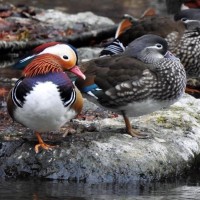 Japan Birding & Nature A private tour for friends of Andrew Mackie.January 7 - 23, 2026
Japan Birding & Nature A private tour for friends of Andrew Mackie.January 7 - 23, 2026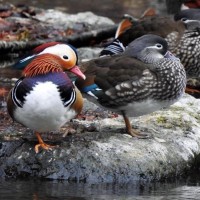 Japan Birding & Nature January 7 - 23, 2027
Japan Birding & Nature January 7 - 23, 2027










